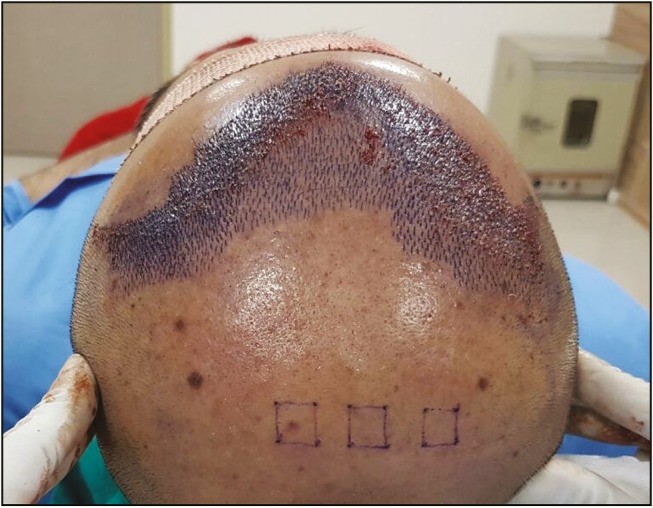Introduction
Hair restoration procedures (HRPs) aim to achieve natural-looking hair regrowth using transplanted follicles. When scalp hair is limited, body hair offers a viable alternative. This comparative study examines the survival and characteristics of scalp, beard, and chest hair after transplantation to the scalp, providing valuable insights for optimizing HRP outcomes.
Background
Donor hair from non-scalp regions is crucial when scalp hair is insufficient. While body hair transplantation is increasingly common, comparative studies analyzing its efficacy against scalp hair are scarce. This research directly compares the survival rates and characteristics of transplanted scalp, beard, and chest hair.
Study Design and Methodology
This interventional study involved five patients with advanced male pattern baldness (grade 6-7 on the Hamilton-Norwood scale). Three 1cm² blocks were marked on the mid-frontal scalp of each patient. Within each block, 30 slits were created, and single follicular units from the scalp, beard, and chest were implanted simultaneously. Graft loss, anagen effluvium (temporary hair shedding), and survival rates were assessed at various intervals post-transplantation (2, 7, and 14 days; 8 weeks; 3, 6, and 12 months).
Key Findings and Results
- Anagen Effluvium: Within two months, anagen effluvium was significantly lower in scalp (40%) and beard (30%) hair compared to chest hair (53.3%).
- Survival Rates: At the one-year mark, beard hair demonstrated the highest survival rate (95%), followed by scalp hair (89%) and chest hair (76%). This difference in survival rates was statistically significant.
- Hair Characteristics: Beard hair exhibited faster growth compared to scalp and chest hair post-transplantation. The distinct curl and thickness of beard and chest hair remained even after transplantation to the scalp.
Discussion and Implications
This study confirms the viability of non-scalp hair, particularly beard hair, as an excellent donor source for HRPs. The high survival rate and robust growth of beard hair make it a compelling option for restoring hair density. However, the lower survival rate of chest hair underscores the importance of careful donor hair selection and patient counseling. The persistent distinct characteristics of transplanted body hair reinforce the concept of donor dominance and highlight the need for strategic placement to achieve natural-looking results.
Conclusion
This comparative study provides crucial data on the survival and characteristics of transplanted scalp, beard, and chest hair. Beard hair emerges as a superior donor source compared to chest hair, exhibiting higher survival rates and robust growth. These findings have significant implications for optimizing HRP techniques and patient outcomes. Further research with larger sample sizes is warranted to validate these findings and refine the application of body hair in hair restoration.
